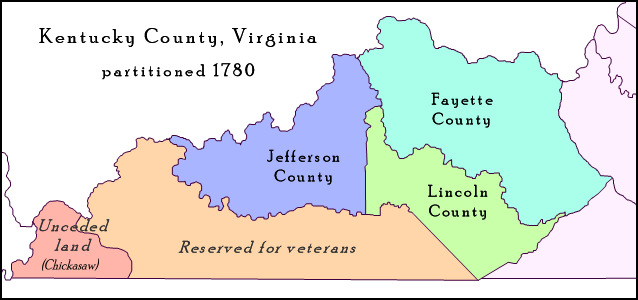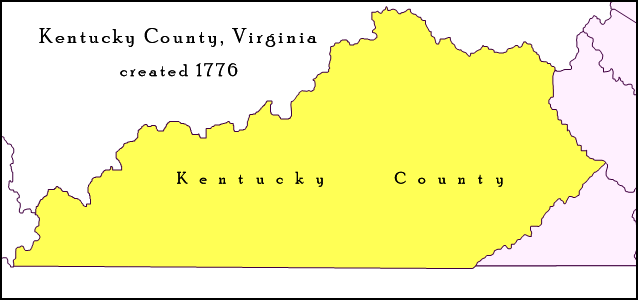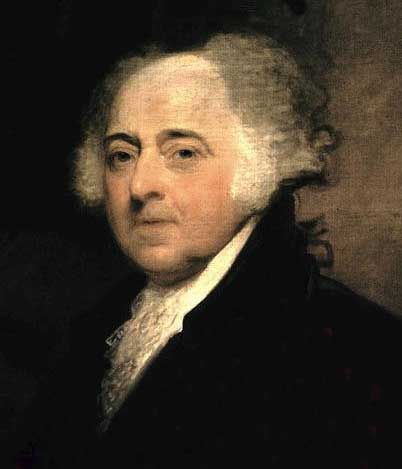|
Jefferson County, Kentucky
Jefferson County is located in the north central portion of the U.S. state of Kentucky. As of the 2020 census, the population was 782,969. It is the most populous county in the commonwealth (with more than twice the population of second ranked Fayette County). Since a city-county merger in 2003, the county's territory, population and government have been coextensive with the city of Louisville, which also serves as county seat. The administrative entity created by this merger is the Louisville/Jefferson County Metro Government, abbreviated to Louisville Metro. Jefferson County is the anchor of the Louisville-Jefferson County, KY-IN Metropolitan Statistical Area, locally referred to as Kentuckiana. History Jefferson County—originally Jefferson County, Virginia—was established by the Virginia General Assembly in June 1780, when it abolished and partitioned Kentucky County into three counties: Fayette, Jefferson and Lincoln. Named for Thomas Jefferson, who was governor ... [...More Info...] [...Related Items...] OR: [Wikipedia] [Google] [Baidu] |
Consolidated City-county
In United States local government, a consolidated city-county is formed when one or more cities and their surrounding county ( parish in Louisiana, borough in Alaska) merge into one unified jurisdiction. As such it has the governmental powers of both a municipal corporation and an administrative division of a state. A consolidated city-county is different from an independent city, although the latter may result from consolidation of a city and a county and may also have the same powers as a consolidated city-county. An independent city is a city not deemed by its state to be located within the boundary of any county and considered a primary administrative division of its state. A consolidated city-county differs from an independent city in that the city and county both nominally exist, although they have a consolidated government, whereas in an independent city, the county does not even nominally exist. Furthermore, a consolidated city-county may still contain independent munici ... [...More Info...] [...Related Items...] OR: [Wikipedia] [Google] [Baidu] |
Kentucky County, Virginia
Kentucky County (then alternately spelled Kentucke County) was formed by the Commonwealth of Virginia from the western portion (beyond the Cumberland Mountains) of Fincastle County effective December 31, 1776. The name of the county was taken from a Native American place name that came to be associated with a river in east central Kentucky, and gave the Kentucky River its name. During the three and one-half years of Kentucky County's existence, its seat of government was Harrodstown (then also known as Oldtown, later renamed Harrodsburg). Kentucky County was abolished on June 30, 1780, when it was divided into Fayette, Jefferson, and Lincoln counties. Afterward, these counties and those set off from them later in that decade were designated collectively as the District of Kentucky by the Virginia House of Delegates. The counties of the district frequently petitioned both the Virginia legislature and the Continental Congress seeking statehood. Finally successful, the Commo ... [...More Info...] [...Related Items...] OR: [Wikipedia] [Google] [Baidu] |
Jefferson County Judge/Executive
The Jefferson County Judge/Executive is the nominal chief executive of Jefferson County, Kentucky. On January 3, 2003, the county government merged with that of its largest city, Louisville, to create the Louisville Metro Government. The former powers of the County Judge/Executive were assigned to the newly created office of Mayor of Louisville Metro. The position of county judge/executive is established in the state constitution. Kentucky Revised Statutes 67.700 further establishes the position of "County Judge/Executive" for all counties in Kentucky. As a result of the city-county consolidation, Jefferson County is the only county in which the office has no governing powers, but it remains an elected office. The holder of the position continues to represent the county in various organizational and lobbying groups, such as the National Association of Counties and the state judge/executive association. History Kentucky's Constitutions of 1792 and 1799 did not provide for a coun ... [...More Info...] [...Related Items...] OR: [Wikipedia] [Google] [Baidu] |
Chenoweth Massacre
The Chenoweth Massacre of July 17, 1789 was the last major Native Americans in the United States, Native American raid in present-day Jefferson County, Kentucky (Louisville, Kentucky, Louisville Metro). Captain Richard Chenoweth, builder of Fort Nelson (Kentucky), Fort Nelson, was stationed with his family northeast of present-day Middletown, Kentucky, Middletown when a large band of Native Americans (likely Shawnee) attacked from across the Ohio River. They killed three of Chenoweth's children, Levi, Margaret and Polly and two of the soldiers. Chenoweth's wife, Margaret "Peggy" née McCarthy was pierced through the lungs by an arrow and seriously wounded. She faked death while an attacker took her scalp. She survived and wore a hat for the rest of her life to conceal the scars. Two soldiers were captured alive and were ritually burned at the stake near the springhouse. Chenoweth Station was likely targeted in the raid because it was relatively isolated from the nearest settleme ... [...More Info...] [...Related Items...] OR: [Wikipedia] [Google] [Baidu] |
Beargrass Creek (Kentucky)
Beargrass Creek is the name given to several forks of a creek in Jefferson County, Kentucky. The Beargrass Creek watershed is one of the largest in the county, draining over . It is fairly small, with an average discharge of 103 cubic feet per second at River Road in Louisville. As the forks wind through the area that has become Louisville's East End, they have contributed to the geography that has shaped the area. The origin of the name "Beargrass" is not clear, though local stories abound and it was written as "Baregrass Creek" and "Bear Grass Creek" in early maps. Lyndon Lore states, "The name Beargrass was originally Bear Grasse, because the bears came to the creek for water and also for salt from the salt licks which were located near Salt River." The earliest settlements by Europeans in the area were built in the form of stations, or forts, along the banks of the creek. The three forks drain about of land, and occasionally flood. Following the construction of the U.S. ... [...More Info...] [...Related Items...] OR: [Wikipedia] [Google] [Baidu] |
Vice President Of The United States
The vice president of the United States (VPOTUS) is the second-highest officer in the executive branch of the U.S. federal government, after the president of the United States, and ranks first in the presidential line of succession. The vice president is also an officer in the legislative branch, as the president of the Senate. In this capacity, the vice president is empowered to preside over Senate deliberations at any time, but may not vote except to cast a tie-breaking vote. The vice president is indirectly elected together with the president to a four-year term of office by the people of the United States through the Electoral College. The modern vice presidency is a position of significant power and is widely seen as an integral part of a president's administration. While the exact nature of the role varies in each administration, most modern vice presidents serve as a key presidential advisor, governing partner, and representative of the president. The vice president ... [...More Info...] [...Related Items...] OR: [Wikipedia] [Google] [Baidu] |
Richard Mentor Johnson
Richard Mentor Johnson (October 17, 1780 – November 19, 1850) was an American lawyer, military officer and politician who served as the ninth vice president of the United States, serving from 1837 to 1841 under President Martin Van Buren. He is the only vice president elected by the United States Senate under the provisions of the Twelfth Amendment. Johnson also represented Kentucky in the U.S. House of Representatives and Senate. He began and ended his political career in the Kentucky House of Representatives. Johnson was elected to the House of Representatives in 1806 in the early Federal period. He became allied with fellow Kentuckian Henry Clay as a member of the War Hawks faction that favored war with Britain in 1812. At the outset of the War of 1812, Johnson was commissioned a colonel in the Kentucky Militia and commanded a regiment of mounted volunteers from 1812 to 1813. He and his brother James served under William Henry Harrison in Upper Canada. Johnson led tro ... [...More Info...] [...Related Items...] OR: [Wikipedia] [Google] [Baidu] |
Falls Of The Ohio
The Falls of the Ohio National Wildlife Conservation Area is a national, bi-state area on the Ohio River near Louisville, Kentucky in the United States, administered by the U.S. Army Corps of Engineers. Federal status was awarded in 1981. The falls were designated a National Natural Landmark in 1966. Overview The area is located at the Falls of the Ohio, which was the only navigational barrier on the river in earlier times. The falls were a series of rapids formed by the relatively recent erosion of the Ohio River operating on 386-million-year-old Devonian hard limestone rock shelves. Louisville, Kentucky, and the associated Indiana communities— Jeffersonville, Clarksville, and New Albany—all owe their existence as communities to the falls, as the navigational obstacles the falls presented meant that late-18th-century and early- to late-19th-century river traffic could benefit from local expertise in navigating the drop made by the river over a distance of two miles (3& ... [...More Info...] [...Related Items...] OR: [Wikipedia] [Google] [Baidu] |
Ohio River
The Ohio River is a long river in the United States. It is located at the boundary of the Midwestern and Southern United States, flowing southwesterly from western Pennsylvania to its mouth on the Mississippi River at the southern tip of Illinois. It is the third largest river by discharge volume in the United States and the largest tributary by volume of the north-south flowing Mississippi River that divides the eastern from western United States. It is also the 6th oldest river on the North American continent. The river flows through or along the border of six states, and its drainage basin includes parts of 14 states. Through its largest tributary, the Tennessee River, the basin includes several states of the southeastern U.S. It is the source of drinking water for five million people. The lower Ohio River just below Louisville is obstructed by rapids known as the Falls of the Ohio where the elevation falls in restricting larger commercial navigation, although in the 18th ... [...More Info...] [...Related Items...] OR: [Wikipedia] [Google] [Baidu] |
Corn Island (Kentucky)
Corn Island, formerly Dunmore's Island, was a former island in the Ohio River at head of the Falls of the Ohio, just north of Louisville, Kentucky. Estimates of the size of Corn Island, now submerged, vary with time, as it gradually was eroded and became submerged. A 1780 survey listed its size at . It then extended from what is now Louisville's Fourth to Fourteenth Streets. The first settlement that later became Louisville on the mainland was established on the island in 1778 by George Rogers Clark. History Corn Island was first surveyed in 1773 by Virginia Captain Thomas Bullitt's party and called ''Dunmore's Island'' (after John Murray, 4th Earl of Dunmore, Crown Governor of Virginia). Surveying expeditions like that helped to provoke Dunmore's War the following year. During the American Revolutionary War, the island was settled on May 27, 1778 by George Rogers Clark's militia and 60 civilian settlers, who remained behind when Clark's party departed on June 24. Among the s ... [...More Info...] [...Related Items...] OR: [Wikipedia] [Google] [Baidu] |
George Rogers Clark
George Rogers Clark (November 19, 1752 – February 13, 1818) was an American surveyor, soldier, and militia officer from Virginia who became the highest-ranking American patriot military officer on the northwestern frontier during the American Revolutionary War. He served as leader of the militia in Kentucky (then part of Virginia) throughout much of the war. He is best known for his captures of Kaskaskia (1778) and Vincennes (1779) during the Illinois Campaign, which greatly weakened British influence in the Northwest Territory. The British ceded the entire Northwest Territory to the United States in the 1783 Treaty of Paris, and Clark has often been hailed as the "Conqueror of the Old Northwest". Clark's major military achievements occurred before his thirtieth birthday. Afterward, he led militia in the opening engagements of the Northwest Indian War, but was accused of being drunk on duty. He was disgraced and forced to resign, despite his demand for a formal investiga ... [...More Info...] [...Related Items...] OR: [Wikipedia] [Google] [Baidu] |
American Revolutionary War
The American Revolutionary War (April 19, 1775 – September 3, 1783), also known as the Revolutionary War or American War of Independence, was a major war of the American Revolution. Widely considered as the war that secured the independence of the United States, fighting began on April 19, 1775, followed by the Lee Resolution on July 2, 1776, and the Declaration of Independence on July 4, 1776. The American Patriots were supported by the Kingdom of France and, to a lesser extent, the Dutch Republic and the Spanish Empire, in a conflict taking place in North America, the Caribbean, and the Atlantic Ocean. Established by royal charter in the 17th and 18th centuries, the American colonies were largely autonomous in domestic affairs and commercially prosperous, trading with Britain and its Caribbean colonies, as well as other European powers via their Caribbean entrepôts. After British victory over the French in the Seven Years' War in 1763, tensions between the motherland and he ... [...More Info...] [...Related Items...] OR: [Wikipedia] [Google] [Baidu] |








